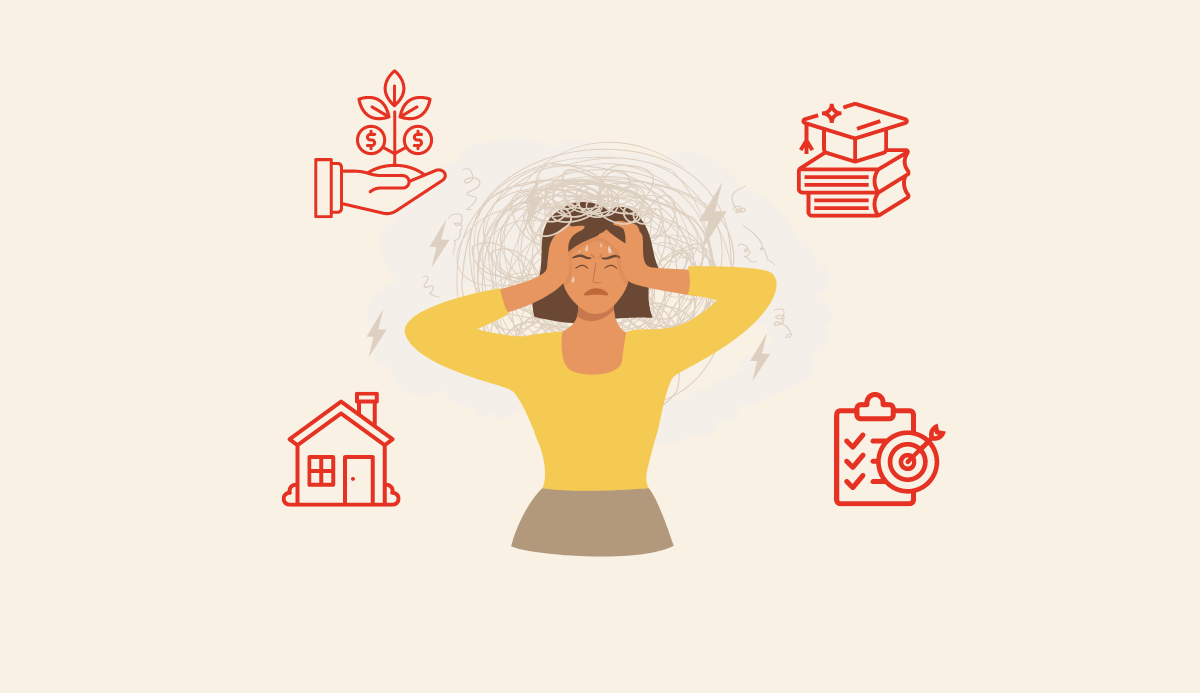
I’ve discovered that traditional organization advice rarely works for ADHD brains like ours. While neurotypical minds can handle complex filing systems and detailed routines, we need something entirely different—strategies that work *with* our scattered attention rather than against it. The secret isn’t becoming more disciplined or organized in conventional ways. Instead, it’s about designing your home environment to catch you when you stumble, support your natural patterns, and create calm from what feels like constant chaos.
Declutter Your Space Without the Overwhelm
When you’re living with ADHD, the thought of decluttering your entire home can trigger that familiar wave of overwhelm before you’ve even started. I’ve found that breaking decluttering into smaller, manageable areas transforms this formidable task into achievable victories.
Try a 30-day challenge where you tackle one drawer or shelf daily. Remove only items you don’t use or love. When uncertainty strikes, temporarily pack questionable items in labeled boxes—if you don’t retrieve them within three months, donate them. This methodical approach leverages your ADHD brain’s need for structure while preventing the paralysis that comes with facing everything at once.
Create Smart Storage Solutions That Actually Work
The right storage solutions can transform your ADHD-friendly home from chaotic to functional, but only if they match how your brain actually works.
I’ve discovered that visible storage beats hidden compartments every time. You’ll forget what’s tucked away in closed drawers, so embrace open shelving and clear containers. Vertical space is your secret weapon—over-the-door organizers maximize storage without cluttering floors.
Keep duplicates of essentials in multiple locations. I store phone chargers in three rooms because I’ll inevitably leave one somewhere inconvenient. Designate specific donation bins throughout your home, and choose neon-colored items for quicker retrieval when your brain craves instant visual cues.
Design ADHD-Friendly Routines That Stick
Building sustainable routines with ADHD requires working with your brain’s natural patterns instead of forcing rigid schedules that inevitably crumble. I recommend assigning themed days for regular household tasks—Monday for laundry, Wednesday for bathrooms—creating predictable structure without overwhelming your executive function.
Visual timers transform formidable tasks into manageable sprints, while checklists serve as your external memory system. Leverage technology like Alexa to build your second brain, setting reminders and automating routine triggers.
Plan for both high-energy and low-energy days by creating flexible systems that adapt to your natural rhythms rather than fighting against them.
Use Your Natural Clutter Patterns as Organization Guides
Instead of fighting your natural tendency to create clutter piles, let’s harness them as valuable data about how your ADHD brain actually organizes information. Your clutter reveals your access patterns—where you naturally drop keys, stack bills, or pile clothes shows you the storage locations your brain finds logical.
Place bins or containers exactly where these piles form. Keep essential items visible since out-of-sight equals out-of-mind for ADHD brains. Choose bright, neon-colored versions of frequently misplaced items for quicker retrieval. Your clutter isn’t failure—it’s your brain’s roadmap to creating sustainable organization systems that actually work.
Build Flexible Systems for High and Low Energy Days
ADHD energy levels fluctuate dramatically throughout days, weeks, and seasons—what feels manageable on Tuesday might seem impossible on Wednesday. I recommend creating flexible systems that adapt to your energy state.
On high-energy days, batch tasks like meal prep and deep cleaning. During low-energy periods, rely on simplified routines and pre-prepared solutions. Keep essential items duplicated in multiple locations so you won’t scramble when functioning is compromised.
Design your morning routine with backup options—lay out clothes the night before, stock grab-and-go breakfast items, and position necessities within arm’s reach. Your systems should support you, not demand perfection.
Master the Art of Micro-Tidying Sessions
When overwhelm strikes at the sight of your entire house needing attention, break cleaning into “teeny tiny tidies”—focused 5-10 minute sessions that target one small area. I’ll tackle just my nightstand, not the entire bedroom. This approach leverages your ADHD brain’s need for manageable chunks while building momentum through quick wins.
Set a visual timer and choose one specific zone: clear the coffee table, sort one drawer, or organize bathroom counter items. You’ll accomplish more than you expect without triggering executive dysfunction. These micro-sessions prevent the paralysis that comes from facing massive cleaning projects, creating sustainable progress.
Leverage Technology and Tools as Your Second Brain
Your smartphone and smart home devices can become powerful extensions of your ADHD brain, handling the mental load of recalling tasks and schedules. I recommend leveraging Alexa or Google Assistant to set medication reminders, announce daily tasks, and create recurring cleaning schedules.
Use your phone’s camera to photograph where you’ve placed important items—it’s your visual memory backup. Set location-based reminders so your phone alerts you about tasks when you’re in the right room.
Create shared family calendars with color-coding for different responsibilities. These tools don’t replace your capabilities; they amplify them, freeing your mind for creative problem-solving.
Establish Themed Days and Professional Support Systems
Rather than overwhelming yourself with daily decision-making about household tasks, I’ve found that assigning specific themes to different days creates a sustainable rhythm that works with ADHD brain patterns. Monday becomes “Laundry Day,” Wednesday transforms into “Kitchen Deep-Clean,” and Friday handles “Bathroom Maintenance.” This system eliminates the mental load of constantly deciding what needs attention.
When possible, invest in professional cleaning services. You’re not failing—you’re strategically allocating your cognitive resources toward what matters most. Visual timers help maintain momentum during themed tasks, while checklists guarantee nothing gets forgotten. These systems create predictable structure that your ADHD brain craves.
Conclusion
You don’t need a perfect home—you need a functional one that works with your ADHD brain, not against it. I’ve shared these strategies because they’re rooted in how your mind actually operates: embracing visual cues, working with natural energy cycles, and building systems that bend without breaking. Start small, be patient with yourself, and recollect that progress trumps perfection every single time.
Comments
-
Pingback: 10 ADHD-Friendly Morning Routines
-
Pingback: 7 Apps That Actually Help ADHD Brains
-
Pingback: 7 ADHD Comfort Habits That Actually Help
-
Pingback: Why ADHD Women Are Always Tired
-
Pingback: 5 ADHD Girl Problems Nobody Talks About
-
Pingback: 18 Daily Practices for Mental Clarity
-
Pingback: 15 Ways to Save Money at Home





Pingback: 12 ADHD-Friendly Meal Prep Ideas